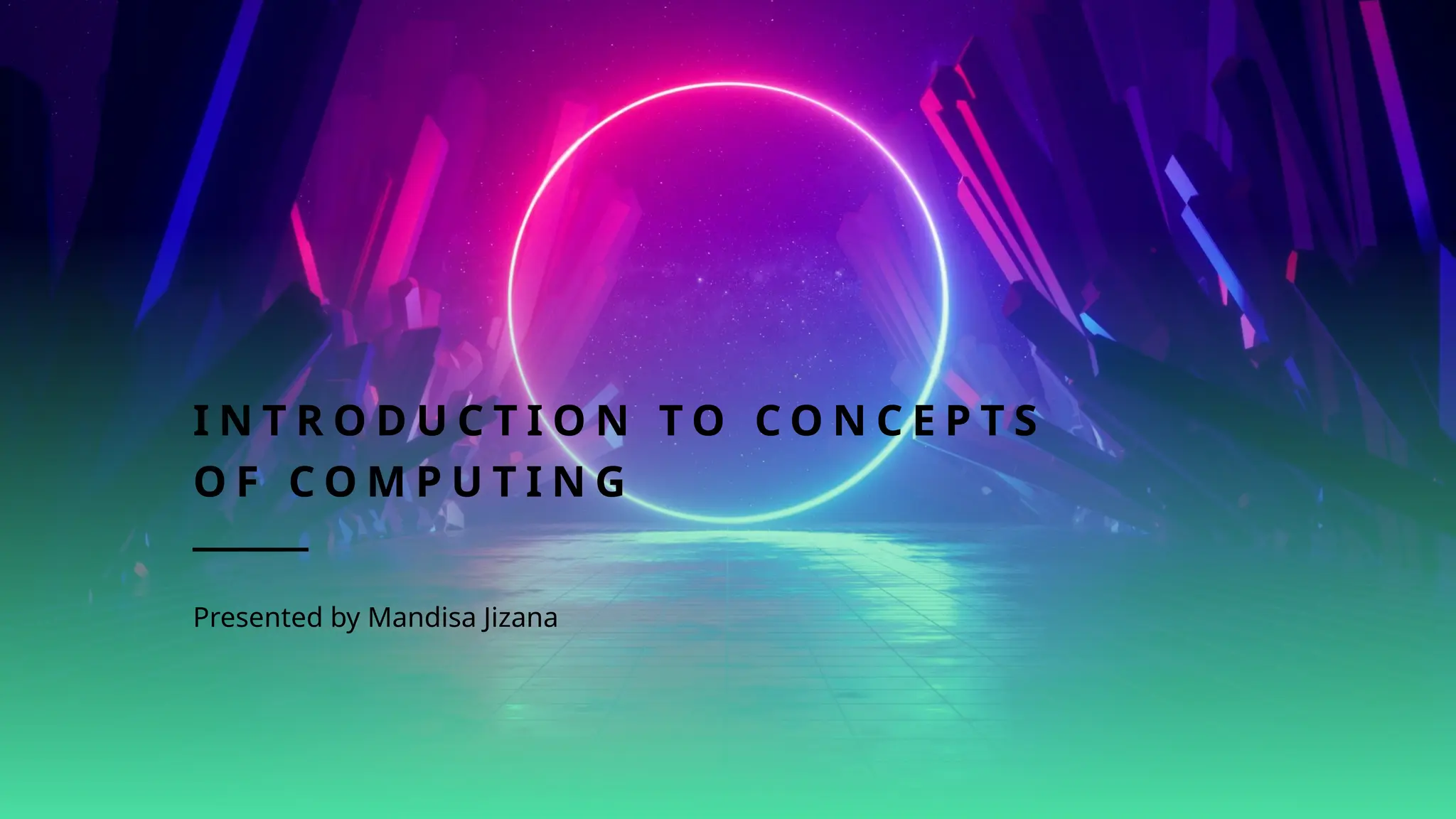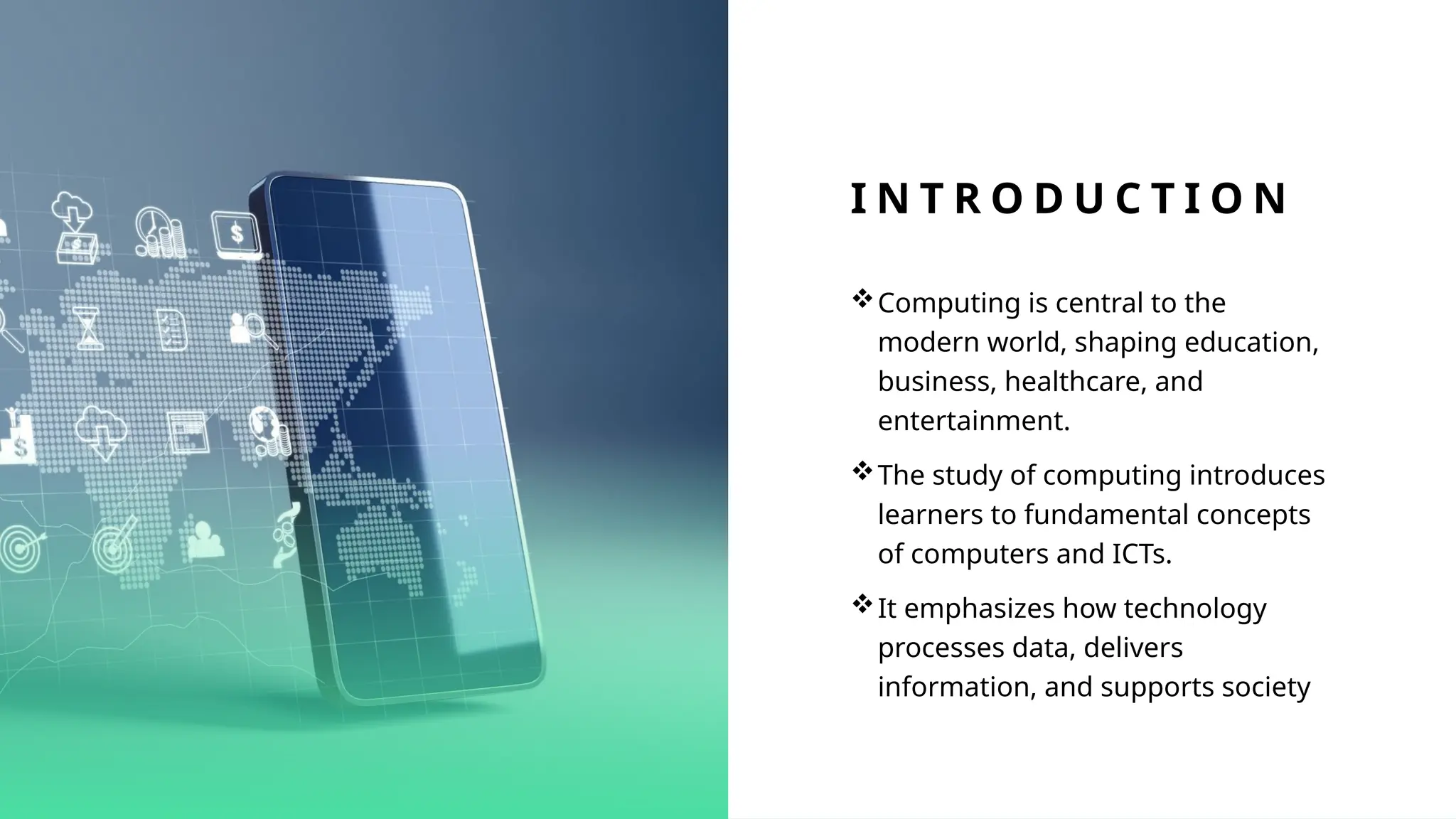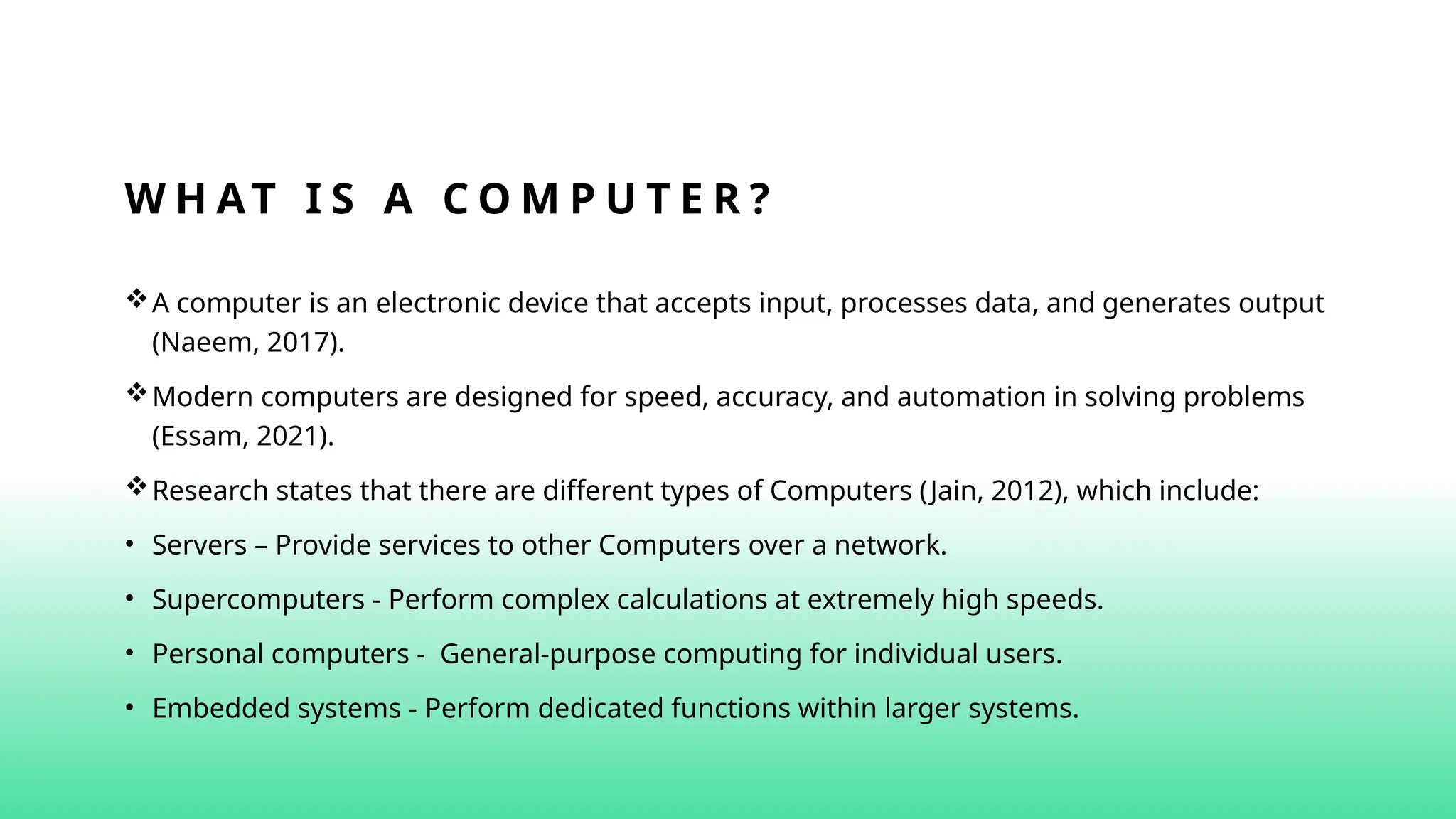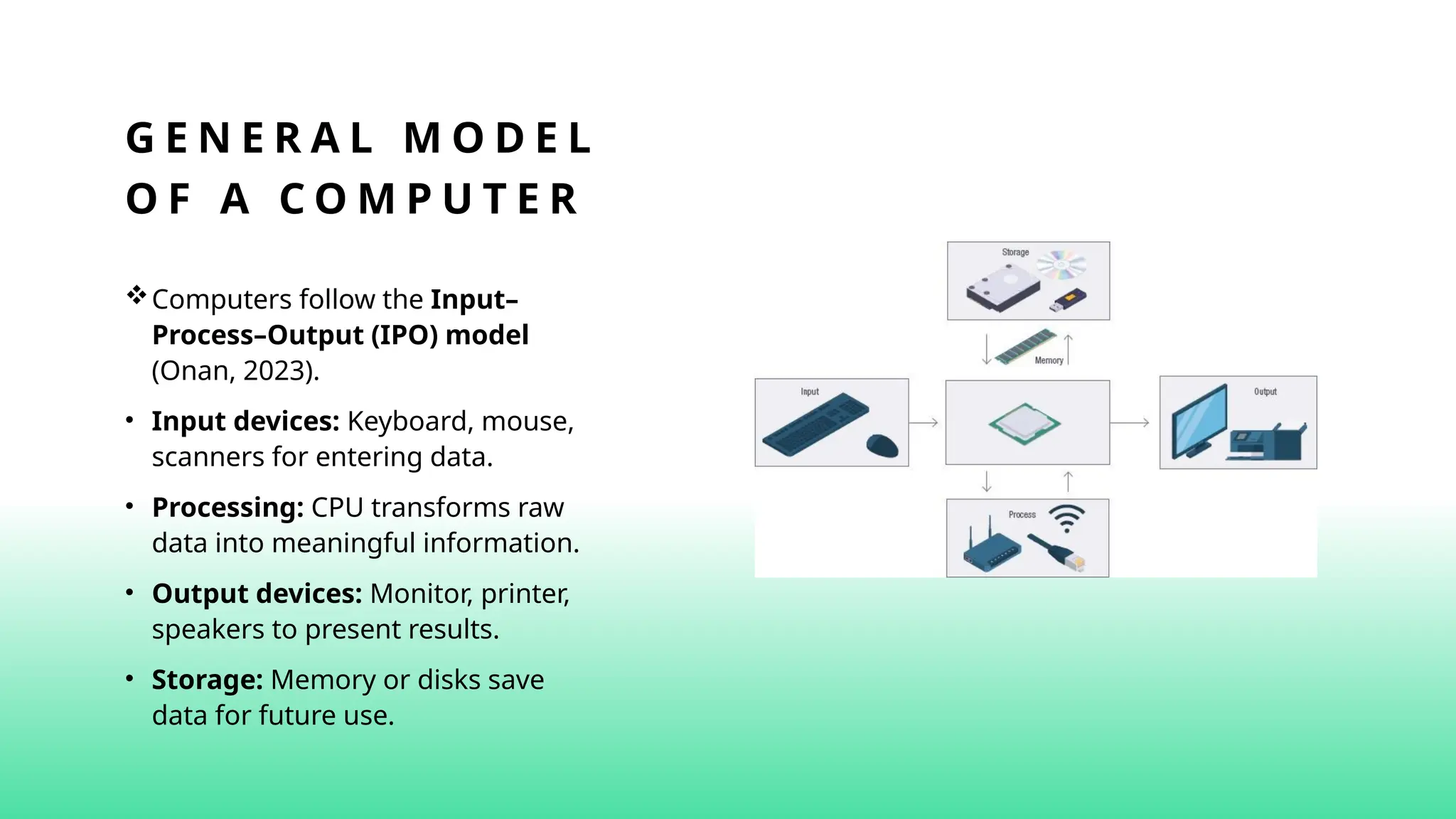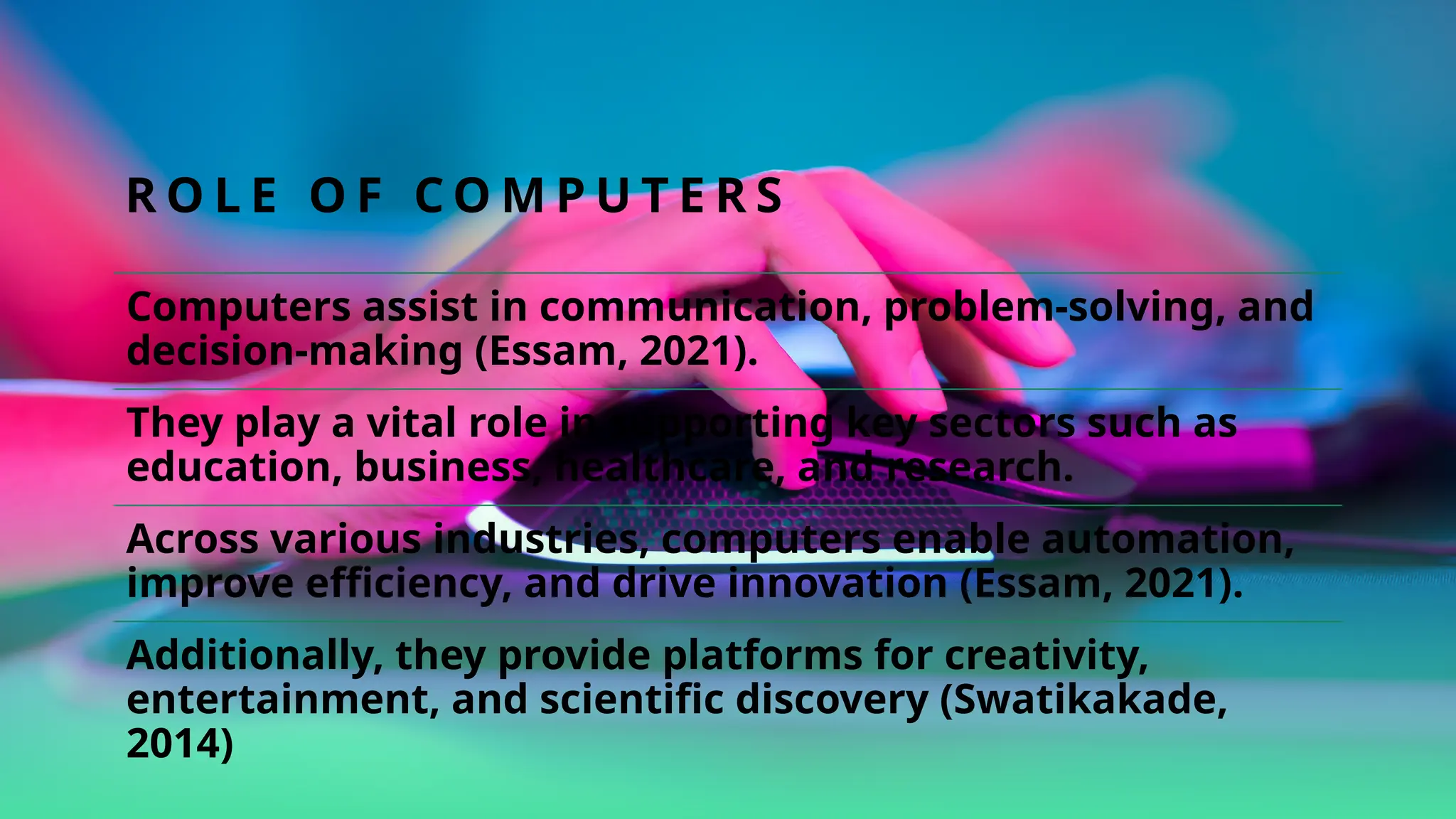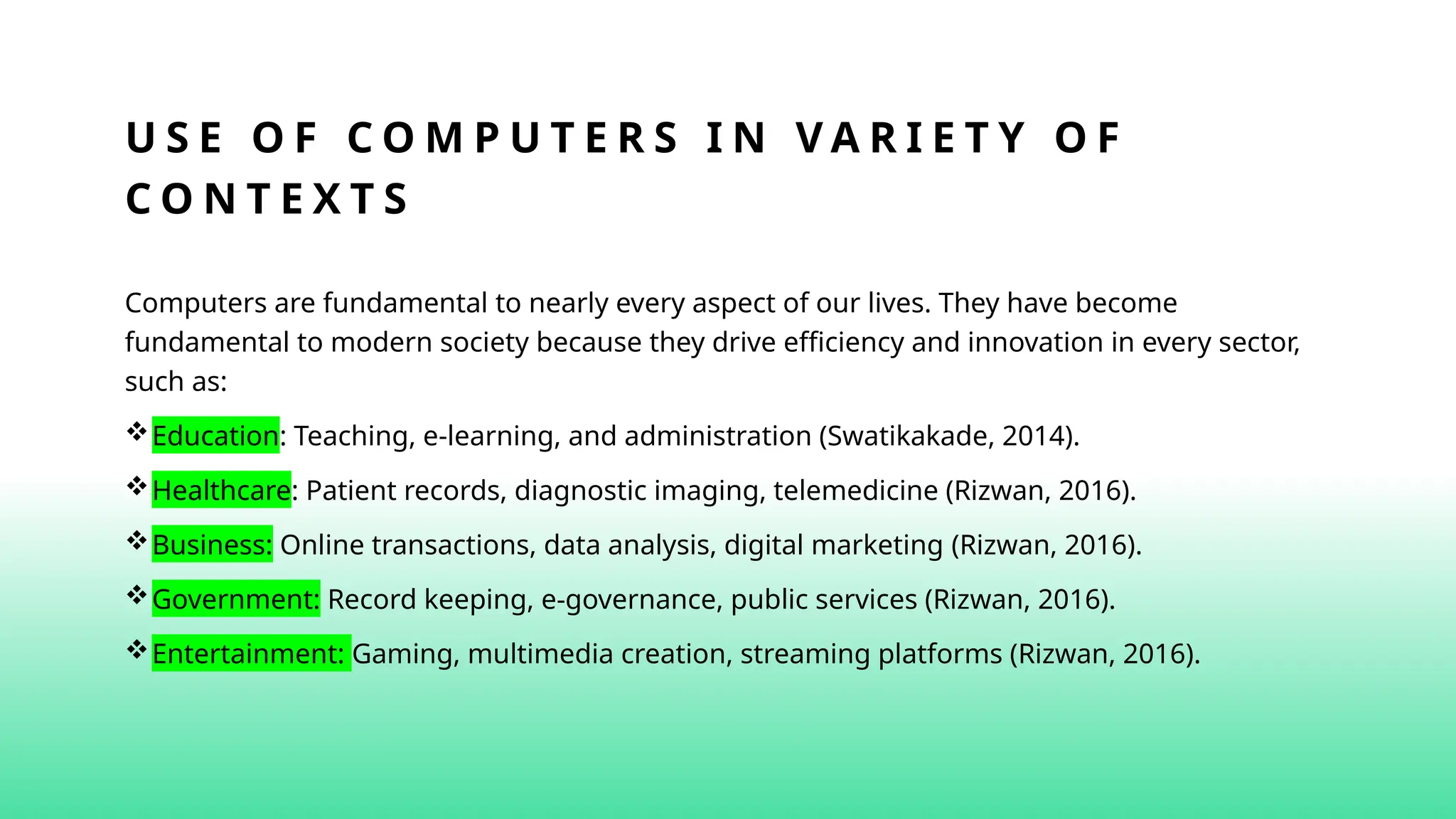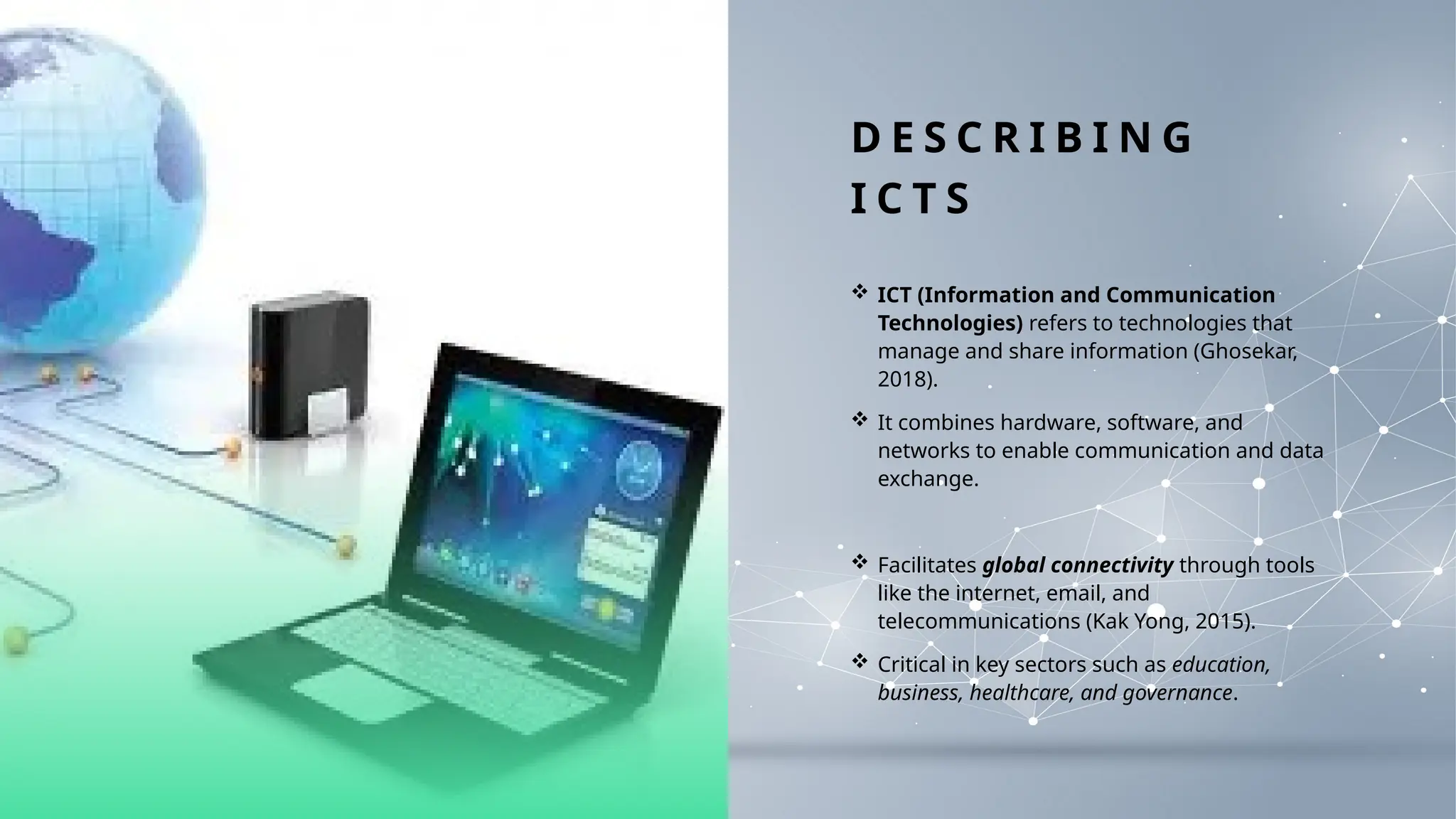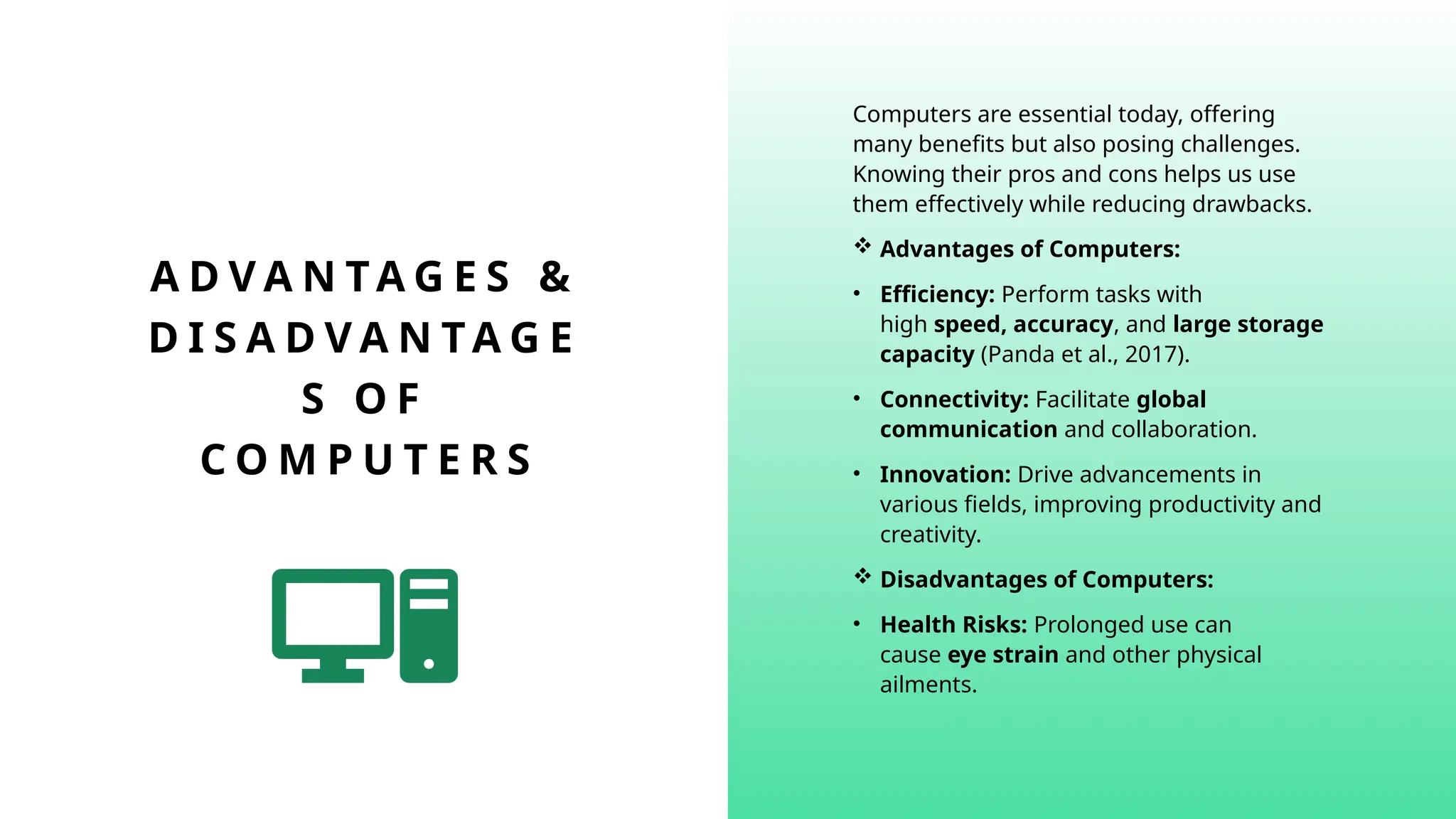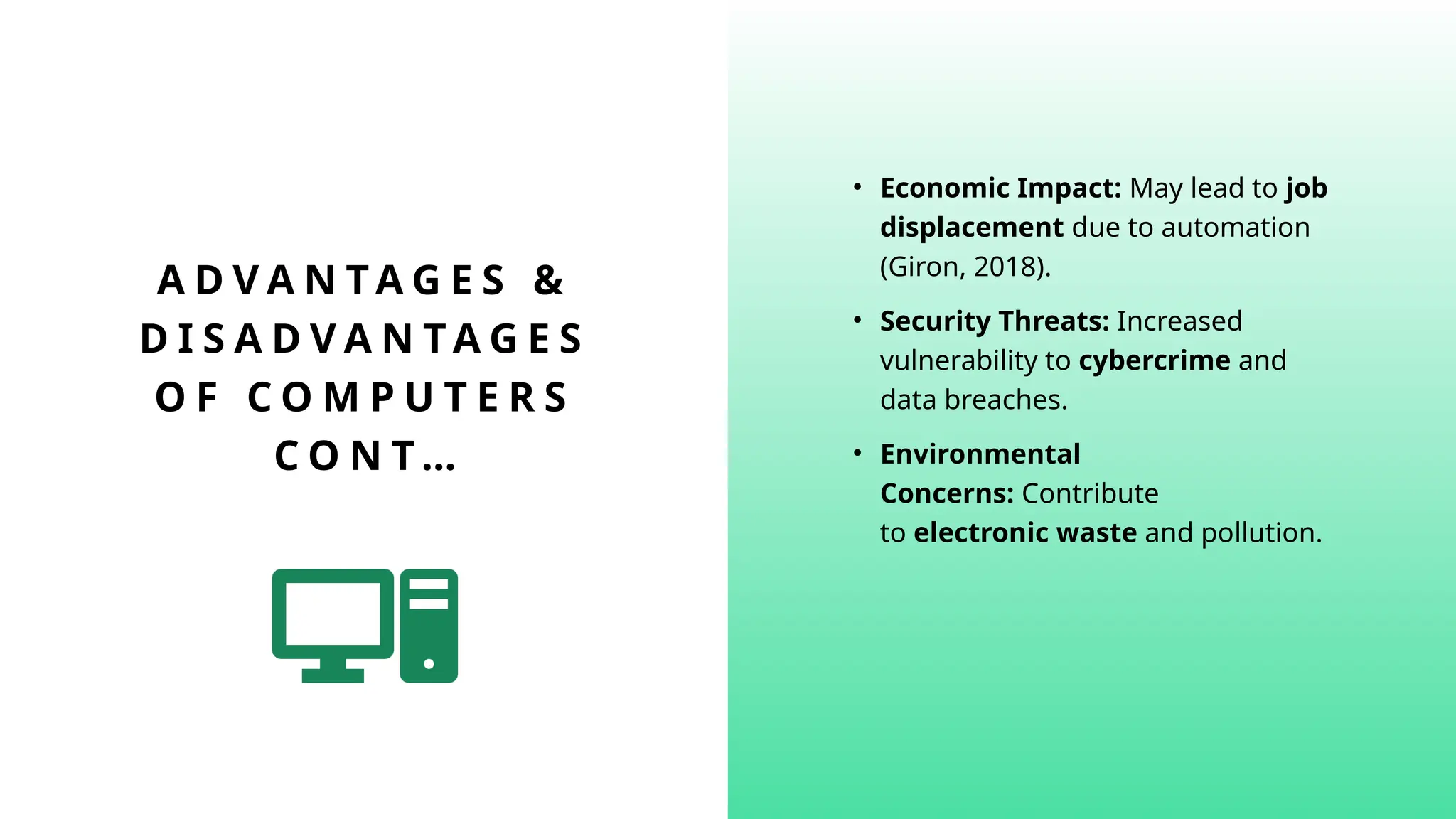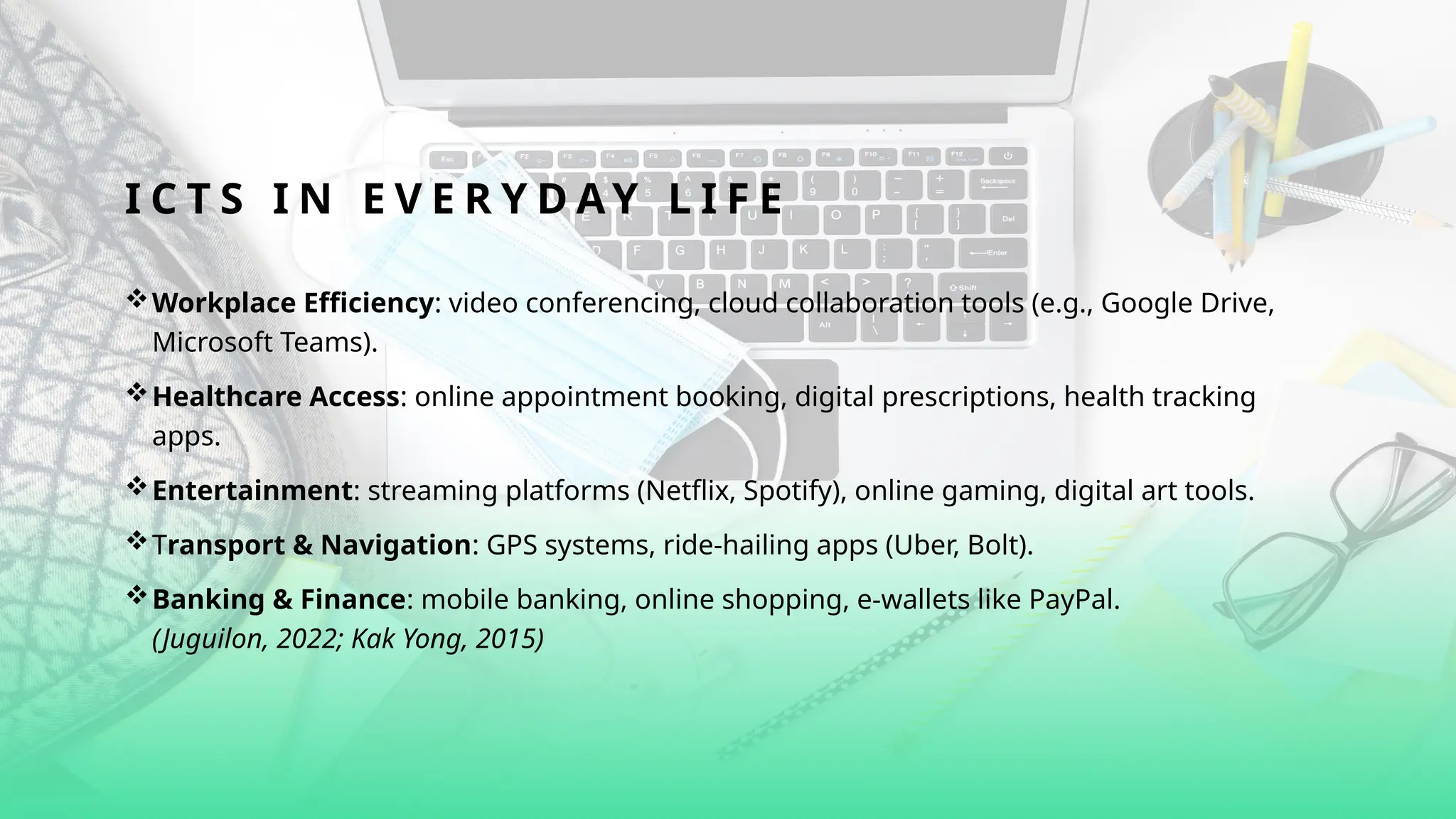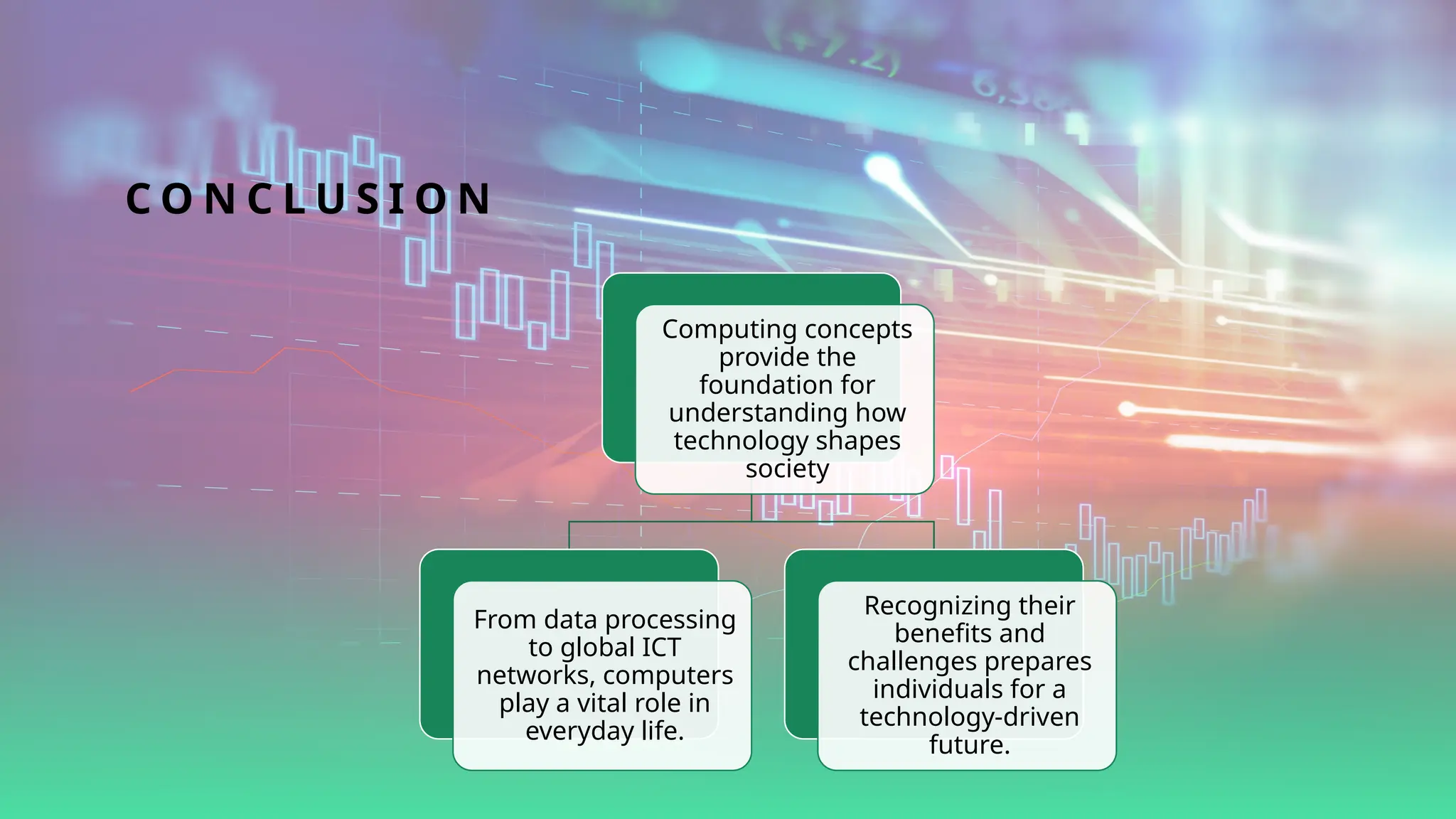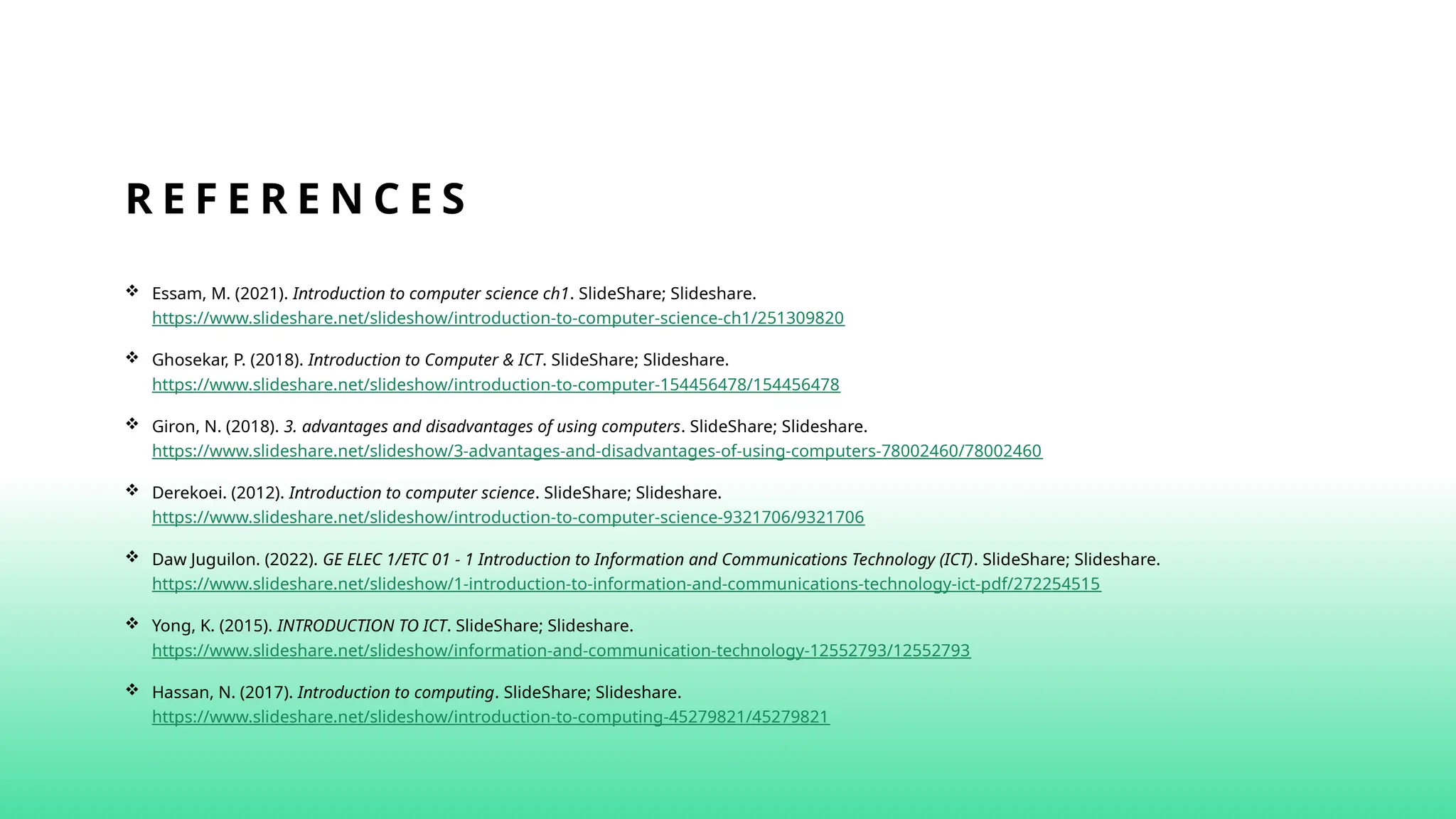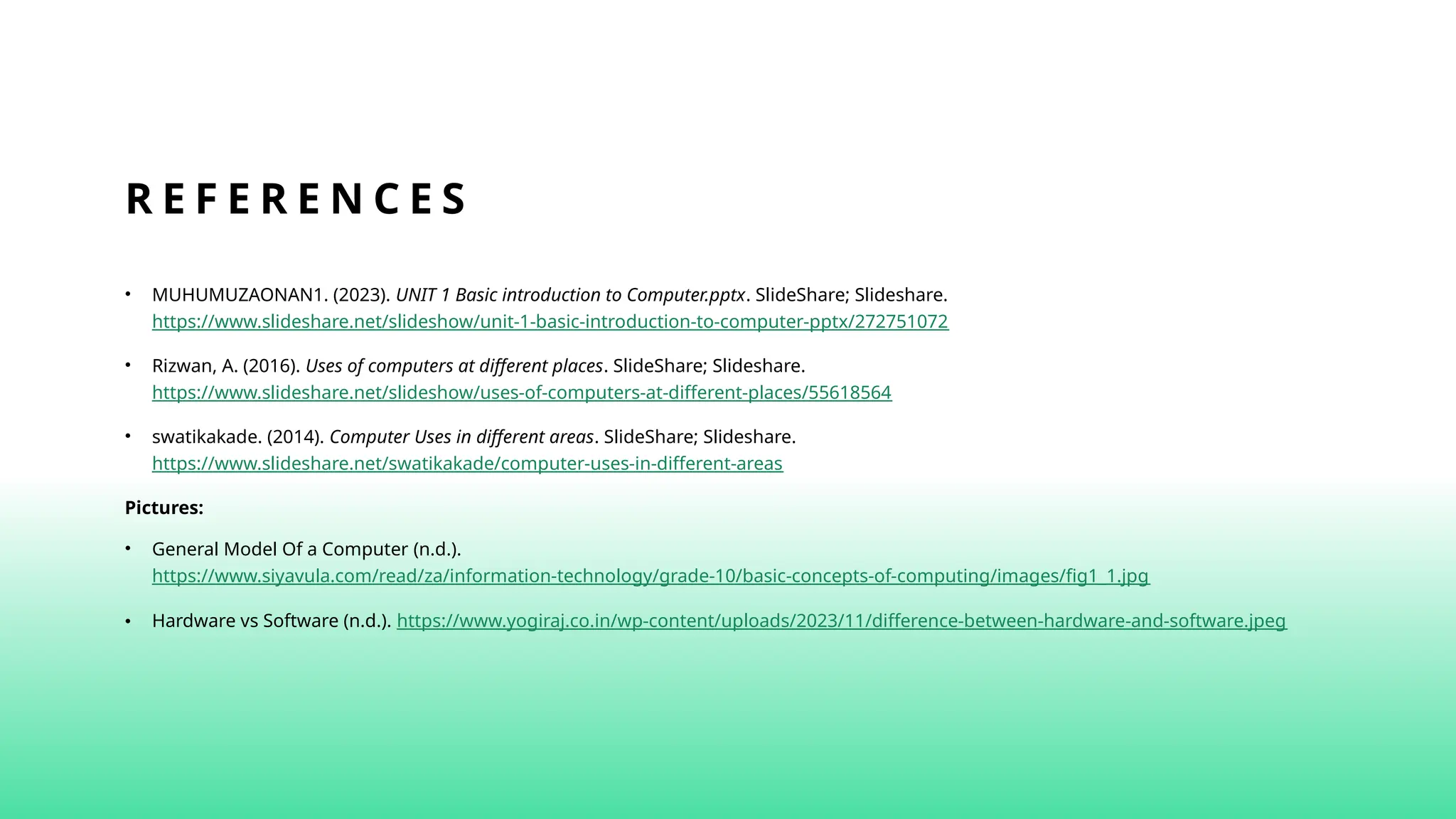This presentation provides an overview of core computing principles, examining the nature of computers, their basic structure, and their transformative influence on today's world. We'll explore real-world applications across key sectors including education, medicine, commerce, and public administration. The discussion presents both the benefits and limitations of computer technology to offer a fair perspective on its societal effects.
Furthermore, the presentation clarifies the concept of Information and Communication Technologies (ICTs) and illustrates their pervasive role in daily activities - from professional communications and digital transactions to leisure and online services. Ultimately, viewers will gain thorough insight into how computers and ICTs drive innovation and progress in our increasingly digital society.
